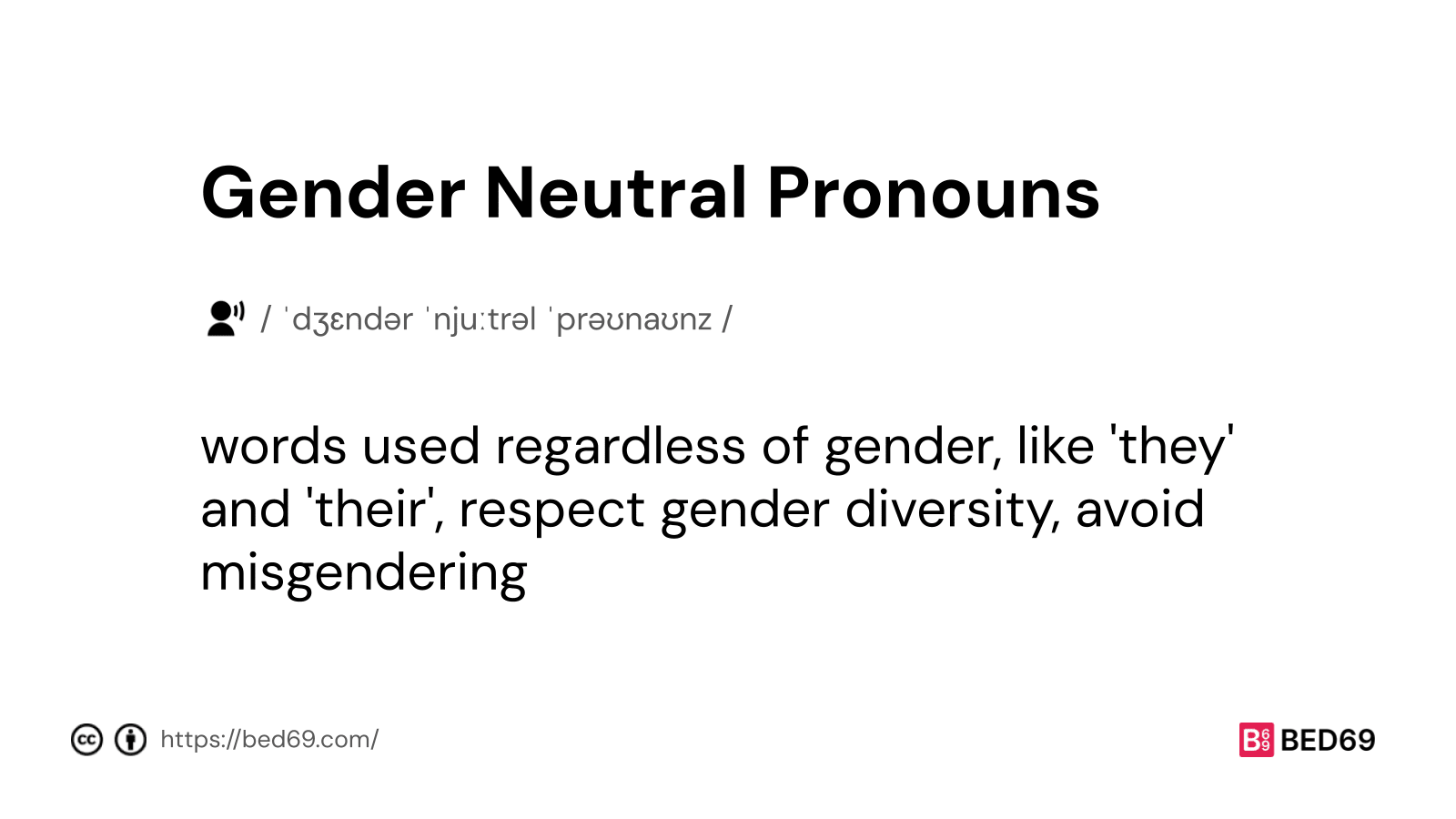What is Gender Neutral Pronouns?
Gender Neutral Pronouns are words that don’t indicate a person’s gender. Examples include They and Their. Using these pronouns is important to respect individuals who may not identify with traditional gender categories. It’s best to ask for someone’s preferred pronouns to show respect and avoid misgendering.
Gender Neutral Pronouns pronunciation: / ˈdʒɛndər ˈnjuːtrəl ˈprəʊnaʊnz /

How can we incorporate gender neutral pronouns in everyday conversations
To incorporate gender neutral pronouns, ask people for their preferred pronouns. It shows respect and avoids misgendering. Traditional pronouns like “he” or “she” may not be suitable for everyone. Using gender neutral pronouns helps create an inclusive environment. It’s important to be mindful of how we address and refer to others.
By normalizing the use of they/them/theirs in everyday conversations, we can promote respect for all gender identities. Remember, it’s always best to ask and use the pronouns someone prefers. Respecting individual identities is key in fostering a welcoming and inclusive community.
Common misconceptions about using gender neutral pronouns
Some common misconceptions about using gender neutral pronouns are tied to confusion or unfamiliarity. Many mistakenly believe that incorporating these pronouns is unnecessary or overly complicated. However, using gender neutral pronouns is essential for respecting everyone’s gender identity.
Another misconception is that gender neutral pronouns are limited in variety; in reality, there are numerous options available beyond just “they/them.” Some might also worry about making mistakes, but it’s okay to slip up as long as you make an effort to correct yourself and learn from the experience. Embracing gender neutral pronouns promotes inclusivity and ensures everyone feels seen and respected in conversations.
Explore other interesting terms:
